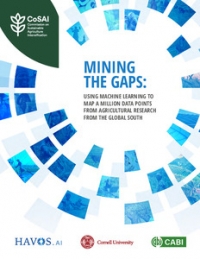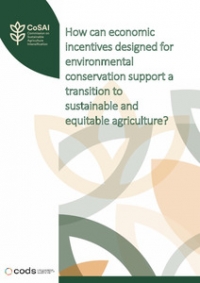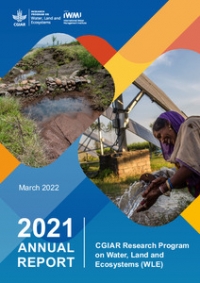"World food supply comes to 2800 calories each day each, enough to make us all chubby" -Frances Moore Lappe
Feeding the world is easy. The panic about the ability of the world to deliver enough food for seven, eight, nine or even ten billion people is absurd. Worse, it is driving the agenda of aggressive land-grabbers and agribusinesses -- pushing farming into the hands of global commerce. After a lifetime writing about the environment, I begin to conclude that the writings of Malthusian sages such as population biologist Paul Ehrlich and agriculturalist Lester Brown have become part of the problem rather than part of the solution.
Rhetoric that was once the calling card of environmentalists is now increasingly heard in Wall Street and the City of London. But in the world of finance and business, resource shortages bring not fear but hopes of future profits. To help things along, some of the new Malthusians are making hysterical claims that would put the old guard to shame.
Malthusian limits
Take Monsanto UK. In a “biotech primer” on its web site, it claims at the time of writing that “one of the few certainties of the future is that the world's population will nearly double, reaching almost 10 billion inhabitants by the year 2030.” This is nonsense. The UN says we are at 7.1 billion and are likely to reach 8.3 billion by 2030, a 17 per cent increase.
As the British think tank Chatham House put it during 2012, “the spectre of resource insecurity has come back with a vengeance.” But the simple truth is that people do not go hungry because the world cannot produce enough food. Malthusian limits are not to blame.
Enough food or too much waste?
The most obvious evidence that shortage of food is a myth comes from statistics on how much food we waste. That evidence is most obscene in the rich world where, as Britain’s Institute of Mechanical Engineers concluded in a new-year report, at least 30 per cent of all food is thrown away by consumers uneaten.
But it is equally true in poor nations, where consumers waste much less, but where post-harvest losses are at least as high. Thanks to poor storage and transport systems, massive amounts of food rot in warehouses or are eaten by pests. Rats grow fat even as people go hungry.
Food production, as measured in tonnes of output, is a success story of the past half century. I remember as a school student hearing Ehrlich’s story of The Population Bomb -- how world population would double in a generation and the seeming impossibility of doubling food production. “The battle to feed the world is over... Billions will die in the 1980s,” he said.
Wrong. Since the early 1960s, the world’s population has indeed more than doubled. But food production has more than tripled, raising per-capita production by as much as 40%. Despite suggestions to the contrary, it continues to rise. This is even allowing for the massive diversion of grains to feed livestock – a remarkably inefficient way of delivering calories to people -- and to biofuels.
As the food advocate and academic Frances Moore Lappe noted last month in the Journal of Peasant Studies, "even on what is left over after feeding a third of the world's grain to livestock and turning about 40% of US corn into fuel; even after feeding a third of the world's fish catch to livestock and simply wasting a third of all the food, there is STILL enough... world food supply comes to 2800 calories each day each, enough to make us all chubby."
And the potential to do better without handing over the world food system to global corporations is huge. Large areas of existing farmland in Africa have meagre yields because farmers cannot afford basic fertilizer.
Equally large areas of cultivated land globally are not used to grow food crops at all. One fortieth of our fields grow cotton, and many more grow rubber, tobacco and various illegal drugs. Global supply of food is driven primarily by market forces and government policies. So what about demand?
Hunger
Well, the world’s population is still rising. We could see two billion more mouths to feed by mid-century. But with birth rates now below 2.5 children per woman, we are almost down to replacement fertility. Whatever Monsanto says, we will not see world population double again.
Yes, there is a rising middle class demanding more meat and dairy products, which require greater resources to produce, including land and water. But remembering all that food waste, it is still hard to believe that the rhetoric of resource constraints is more than covering fire to avoid discussion of the real limits to feeding the world’s poor.
Producing more food does not stop hunger. Ask the people of Zambia. FAO statistics show cereals production has doubled there since 2006 yet, as the World Food programme reports that “poverty and food insecurity are widespread in both rural and urban areas.” It is poverty that correlates with hunger – not food production.
Right now, without chopping down another tree or ploughing up another piece of savanna grassland -- and even with our existing often hopelessly inefficient use of land, water and agrochemicals, and our dodgy diets – the world produces enough to feed between ten and twelve billion people. As Moore Lappe puts it: “There is no world food scarcity. Despite vast waste and misuse, there’s still enough for all.”
Yes, it is a scandal that a billion people go to bed hungry. But lack of food is not the reason.























Comments
A fat people model no matter how well conceived can undoubtfully provide a framework of further understanding. This is very beneficial information. I like this one Fred.
Thanks for this article, AEB and Fred - I've tried numerous times to argue against the use of Malthusian theory as an environmental issues perspective on complex socio-ecological problems. This was an excellent demonstration of the consequences of adopting an outdated economic theory in a globalized agricultural system.